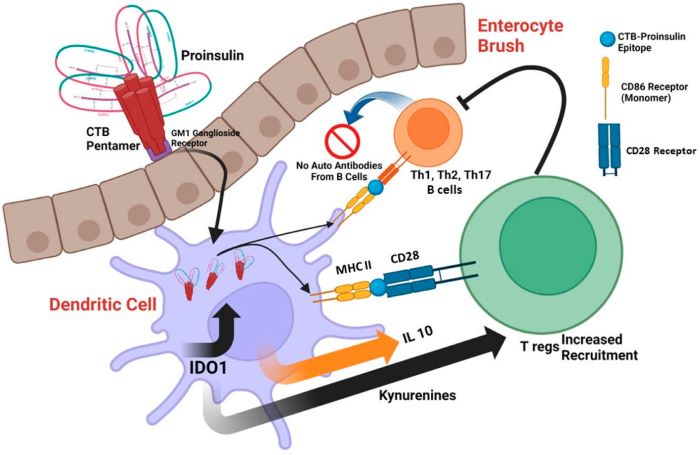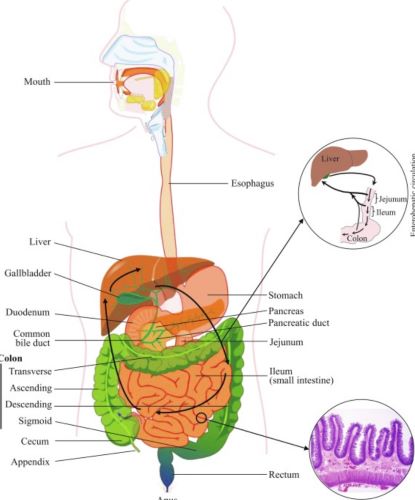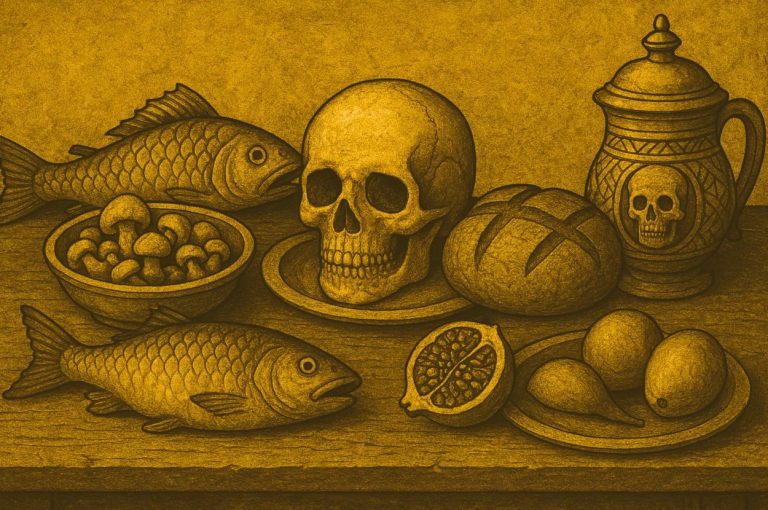

The edible vaccine conspiracy is, in a way, a folk tale for the digital age—mixing magic, medicine, and mistrust.

By Matthew A. McIntosh
Public Historian
Brewminate
From Garden to Paranoia
Imagine biting into a tomato and unknowingly receiving a vaccine dose. That’s the scenario animating one of the more bizarre—and surprisingly viral—conspiracy theories currently circulating on social media. According to believers, the U.S. government is collaborating with biotech firms to engineer vegetables capable of delivering mRNA vaccines, thereby inoculating or even “tracking” the population without their knowledge or consent.
Like many modern conspiracies, this one fuses a kernel of real scientific research with a cascade of speculative leaps, mistrust, and cultural anxiety. It isn’t just about food or medicine—it’s about bodily autonomy, public trust, and the rapidly blurring line between what’s biologically possible and what’s politically imaginable.
The Scientific Spark: Real Research, Unreal Claims
The theory traces its origin, in part, to a 2021 research grant awarded to UC Riverside, where scientists began exploring whether edible plants like lettuce and spinach could be engineered to express mRNA vaccine components. The idea, still years from practical application, was to create a low-cost alternative to traditional vaccines—especially for low-resource areas with limited medical infrastructure.
This isn’t a new concept. The notion of plant-based vaccines dates back to the early 2000s, when researchers investigated whether bananas could deliver immunity against hepatitis B. Unlike injected vaccines, these would be delivered orally via the digestive tract—a very different route of absorption, and one far less efficient without careful dosage control and stability mechanisms.
In reality, none of these efforts have reached the commercialization stage. No grocery store produce contains vaccine agents. But that hasn’t stopped the theory from taking on a life of its own.
From Science to Suspicion

What begins as scientific possibility quickly becomes public paranoia—especially when filtered through online echo chambers already skeptical of government health measures. Posts warning of “vaccine lettuce” and “mRNA salad” have circulated widely across TikTok, Telegram, and fringe Twitter accounts, often tied to broader conspiracies about population control, genetic modification, or government overreach.
To these communities, the edible vaccine concept isn’t just a lab curiosity—it’s a symbol of a deeper fear: that scientific innovation is being wielded by unaccountable elites who seek to override consent under the guise of public health.
Much like earlier vaccine conspiracies, this narrative often borrows from anti-GMO rhetoric, anti-vaccine activism, and even anti-globalist sentiment. The result is a particularly volatile cocktail of distrust that sees Monsanto and Moderna as two heads of the same hydra.
Cultural Soil: Why This Grows So Easily
To dismiss the edible vaccine conspiracy as mere nonsense is to miss the more interesting question: Why does it resonate with so many people?
The answer lies in America’s long history of medical mistrust, particularly among communities that have experienced real violations of bodily autonomy—from the Tuskegee syphilis study to forced sterilizations in marginalized populations. Combine this with food anxieties stoked by decades of concern over additives, GMOs, and pesticide residues, and you get a public deeply ambivalent about what’s in their meals—and who put it there.
Add the emotional residue of the COVID-19 pandemic—lockdowns, mandates, institutional flip-flopping—and the ground is fertile for a theory that collapses food, medicine, and government control into a single metaphor: they’re putting it right on your plate.
Media Amplification and Algorithmic Incentives
Much of the spread of this theory can be attributed not to organized disinformation campaigns, but to the natural incentives of digital media. Posts about “vaccine lettuce” are often sensational, visual, and emotionally charged—perfect fodder for algorithmic promotion.
A satirical video posted to TikTok joking about “edible inoculation” received over 1.2 million views before users began sharing it earnestly. Threads on platforms like X (formerly Twitter) and Reddit often cite legitimate-sounding science articles, but misrepresent their content—turning speculative phrases like “potential oral vaccine delivery” into declarations that your salad is now a syringe.
Mainstream fact-checkers, including the Public Health Collaborative, have debunked the theory repeatedly. But by the time truth arrives, fear has already gone viral.
What’s Actually in Our Food?

Let’s be clear: there are no FDA-approved edible mRNA vaccines. There is no known program to insert them into the food supply. And while transgenic research continues in academic settings, the regulatory, technical, and ethical hurdles to doing this at scale—especially without consumer knowledge—are enormous.
What’s more, oral vaccines face serious biological limitations. The digestive tract is harsh on delicate molecules like mRNA. Without special encapsulation technologies, most of it would degrade before reaching its target. That’s part of why traditional injected vaccines remain dominant even in low-resource settings.
In short, the idea that you could covertly vaccinate an entire population through vegetables isn’t just implausible—it’s scientifically absurd.
The Real Danger Isn’t in the Lettuce
Still, the damage done by this theory isn’t just to the public understanding of science. It’s also to the social fabric that undergirds public health. When conspiracies like this take hold, they deepen existing divides, inflame anti-scientific sentiment, and make it harder for real innovations—like actual, voluntary edible vaccines for the developing world—to be understood and accepted.
In that sense, the real threat isn’t hiding in your fridge. It’s in the erosion of common ground about what’s real and what’s not.
A Modern Folk Tale
The edible vaccine conspiracy is, in a way, a folk tale for the digital age—mixing magic, medicine, and mistrust. It captures a widespread fear that science no longer serves the people, but controls them. That what nourishes us might also betray us. And that behind every promise of convenience or care lies a hidden cost.
But folk tales, like fears, can be reinterpreted. The task now is to ground the public imagination in truth—not just through correction, but through conversation.
Originally published by Brewminate, 07.11.2025, under the terms of a Creative Commons Attribution-NonCommercial-NoDerivatives 4.0 International license.


